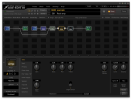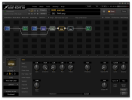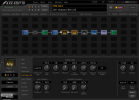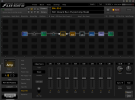The Prophet 5150
Member
Hello Everyone,
Using an amp head with an effects loop, how would I organise the blocks (what would I bypass etc) so that I could switch switch scenes between:
Scene 1: Real amp preamp
Scene 2: FM9 amp model
Scene 3: Real amp preamp
etc
etc
Initially I am wanting to be able to match the FM9 amp model to my real amp...but that got me thinking about other ways to integrate (I am ok with the physical routing of 4CM).
Cheers!
Using an amp head with an effects loop, how would I organise the blocks (what would I bypass etc) so that I could switch switch scenes between:
Scene 1: Real amp preamp
Scene 2: FM9 amp model
Scene 3: Real amp preamp
etc
etc
Initially I am wanting to be able to match the FM9 amp model to my real amp...but that got me thinking about other ways to integrate (I am ok with the physical routing of 4CM).
Cheers!






